In the spirit of celebrating Black empowerment, I wanted to use this article to share my favorite books (*so far*) by Black authors, who are objectively some of the most brilliant and underappreciated humans on this earth. Although the circumstances through which Africans arrived on this continent are unforgivable, there are many magical things that have emerged from their diaspora, Black writing certainly included. In addition to being complex, horizon-broadening and beautiful books, the titles below helped me to discover creative writing as an art genre rather than an academic concept and inspired me to start drafting my own fiction. It is frightening to imagine who I would be without reading these books, so I choose not to. We cannot take them for granted, though; like all capitalist institutions in America, racism has leaked into book sales and Black authors earn far less revenue and media attention than their White counterparts despite their fiction being as, if not more, talented. Unlike other financial inequalities, though, we as regular citizens should not have to wait for new laws or government officials to drag authors to an equilibrium. All of us, if we wish, can support Black authors so that their stories can continue being published and reaching audiences like us in the future. And I hope we do.
(It was impossible to rank the books, so I have listed them below in alphabetical order)
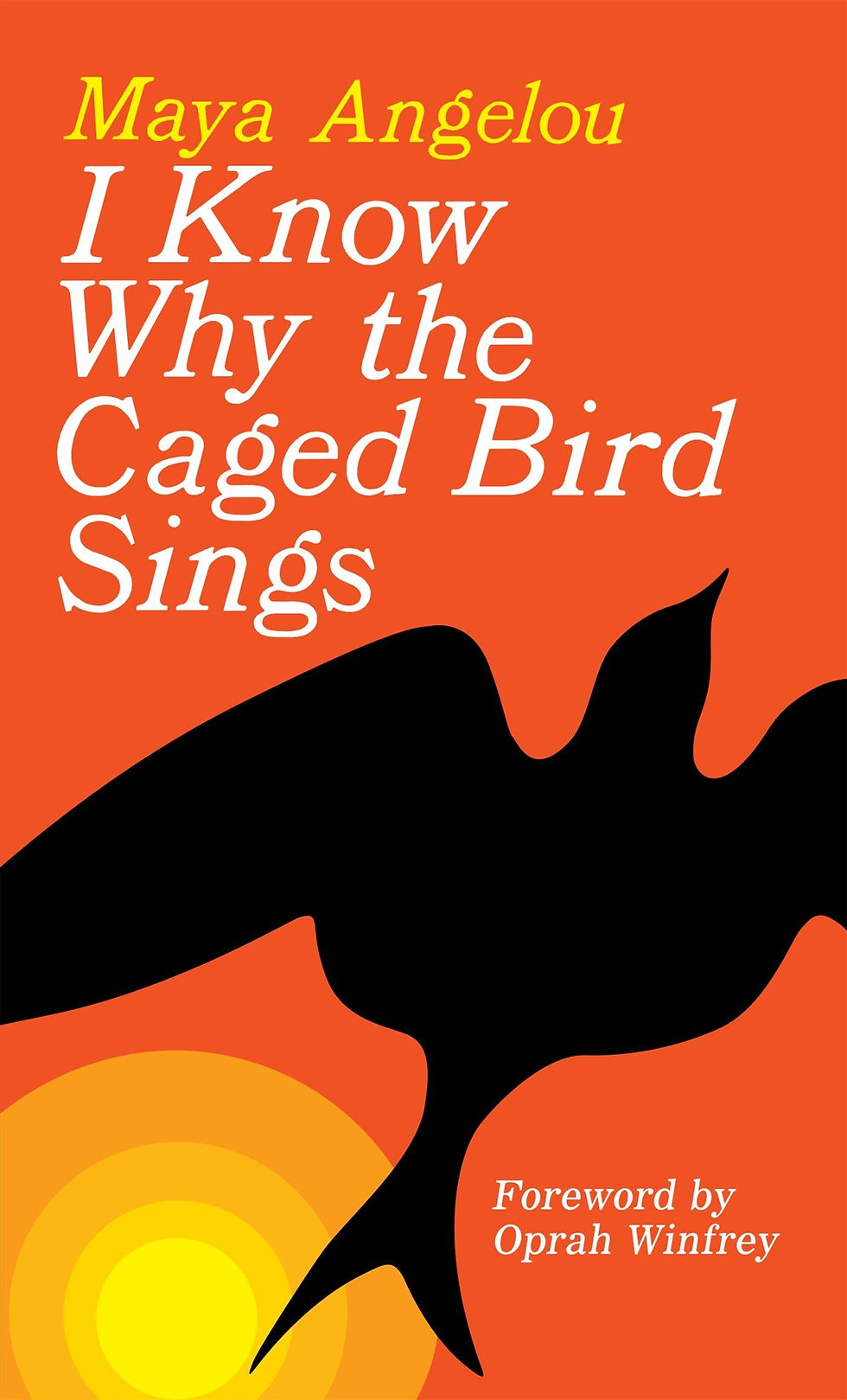
I Know Why the Caged Bird Sings is the first old-school American novel that I have never not hated, with all due respect to the classics. In it, Angelou narrates her coming of age as a resilient but faint-hearted Black girl in the rural cotton-picking South, starting when she is eight and stopping at sixteen. When we first meet her and her brother Bailey), their divorced parents are absent from their lives and their grandmother, who owns a neighborhood general store in Arkansas, is raising them. Life is lonesome, saturated with the rejection of growing up parentless, but otherwise pleasant. Then, out of nowhere, their unfamiliar father arrives in town one morning in a fresh-polished car to bring Maya and Bailey to visit their biological mother in Missouri, setting off a domino effect of relocations that wreak havoc to the calm life she and her brother once experienced. At the end of the book, the family settles in California, where her mother remarries and where Maya is impregnated, and the fog appears to lift from their once-unpredictable futures. As our narrator packs suitcases to move between these material homes, she also packs memories, some cheerful and others more challenging, that string together the various stages of her childhood. We watch this mercurial adolescence through an attentive but sometimes naive camera: Maya understands that her skin color is what makes her feel less attractive than the White girls on the playground and what makes her White dentist refuse to stick his fingers in her mouth, but is still in the process of discovering the institutional oppression behind these dynamics. Antithetical to its narrator, though, the plot is unafraid to reckon with the evil in humans (and I should give a content warning now that this book does contain a rape scene). What I cherish most about I Know Why the Caged Bird Sings, in addition to its narrational tone that is somehow foolish and astonishingly intelligent all at once, is that it resists the temptation to exaggerate character development. Maya is of course braver and more introspective at sixteen then she was as an infant, but during the autobiography these traits are rarely, if ever, exposed. Instead, our narrator is painted as stagnant, someone who is no less vulnerable to racist and sexist attacks after experiencing them than she was before. I feel like this recurring theme speaks volumes about the societal challenges she has survived so far and will have to survive again, for it informs us that racist and patriarchal mistreatment cannot be outgrown like too-tight clothing. No matter her wisdom, people are going to target her. As readers, we are stuck in a constant daze of disbelief, not at the dismal self-esteem afflicting the narrator at such a young energetic age, but at how believable that self-esteem is for low-income Black children in America. Maya Angelou grew up in the polar opposite of the nation that I have, but there is not a singular page on which I cannot relate to the common insecurities and anxieties she is feeling that no humans, nowhere, are immune to. I Know Why the Caged Bird Sings asks us where the division lies between remembering something and being too startled to forget it. It presents us with an author who is pinned down inside cage after cage and decides to give her readers not a whimper about her circumstances, but a song. Gut-wrenching and gorgeous, this autobiographical work is an absolute masterpiece, one that I read over and over again and still never find repetitive.
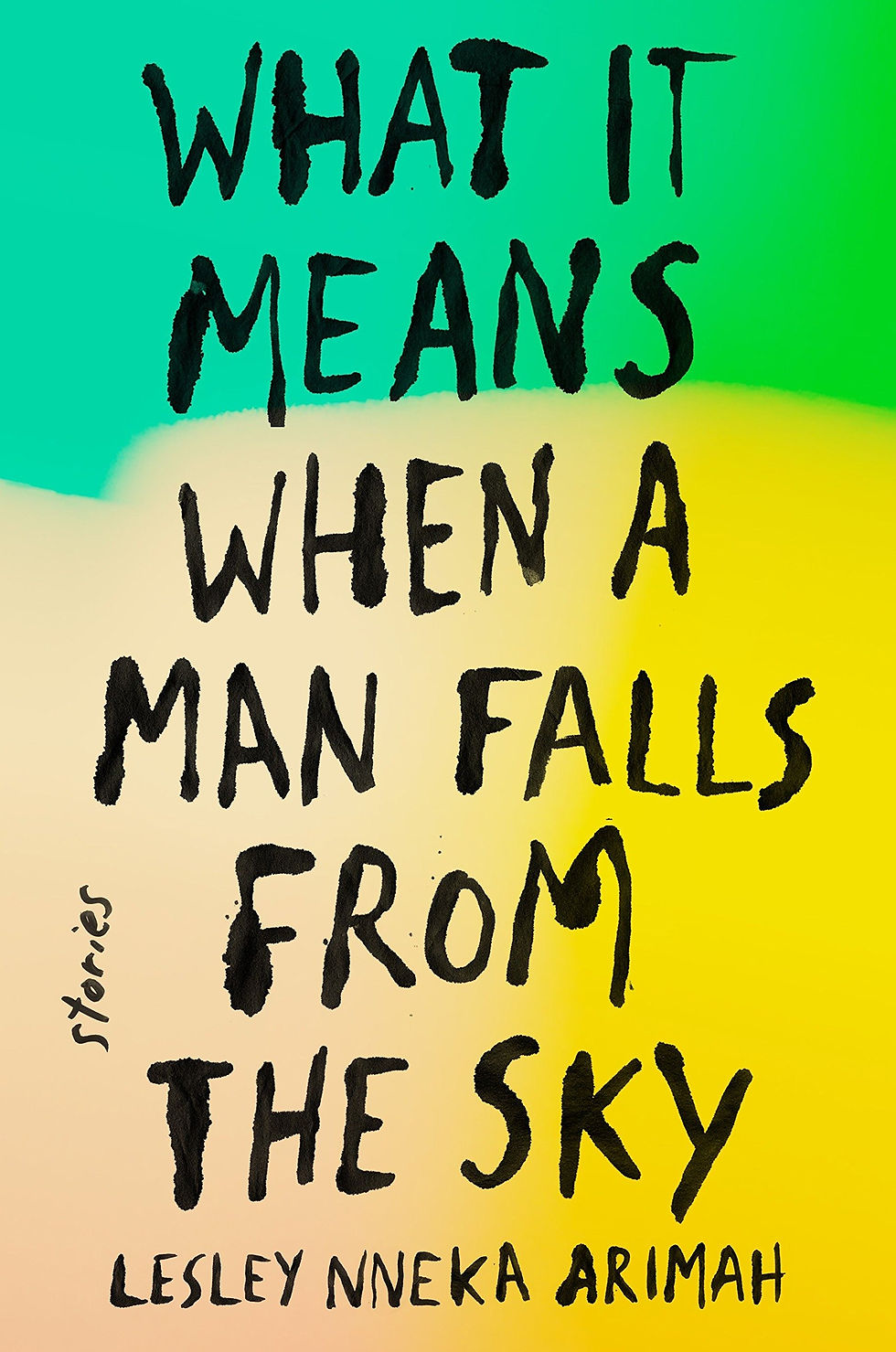
What it Means When a Man Falls from the Sky is a collection of childhood short stories that flex the human imagination into angles I had not known existed before. Unafraid to insert her readers into unfathomable futuristic universes, Arimah shows us the ceiling of human language: although it evokes sensations in us that we feel on a regular basis outside literature, it is not advanced enough to transmit new never-seen-before images into our brains. An invented place, like a non-contagious disease, is mesmerizing for the person who fashioned it, but until the author can find others to envisage it with them, all the happiness and pain of that utopia it is stalled inside their brain and will fade from existence when the author does. Arimah speeds across this reader-narrator distance, convinced that if she can leave these universes behind with us on the page, then she has made them immortal. And she does. The stories gathered in this collection all feature a young female protagonist, often experiencing a strained relationship with a parent, and some form of grief or absence, but other than that the similarities between them are loose and difficult to summarize. A few of my favorite stories, if I had to pick, are Windfalls, about an abusive mother who forces her daughter to slip and fall in supermarkets so that she can file lawsuits about the injuries and revel in the settlement payments, Wild, about a disobedient Nigerian-American girl whose mother punishes her with a visit to her even more defiant cousin in Nigeria, What It Means When A Man Falls from the Sky, about a fictional universe in which mathematical formulas are used to program magical abilities like flight into humans (that is, if there are no miscalculations), Second Chances, about a girl whose dead mother exits a photograph and comes back to life, and What is a Volcano, an origin narrative about the deities who introduced volcanoes to our planet. This collection begs us not for an artistic revolution, but a neurological one. It is certain that there are worlds besides this one, but apprehensive to describe them as either paradises or hells so instead chooses somewhere in the middle. If I had to choose a singular book to keep for the rest of my life, and nothing else, it would be this one. I am fascinated, fascinated, fascinated.
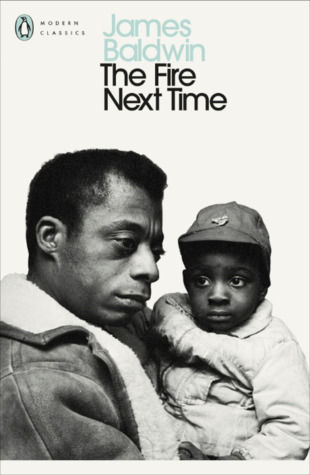
The Fire Next Time is a collection of two brilliant but warm essays, My Dungeon Shook: Letter to my Nephew on the One Hundredth Anniversary of the Emancipation and Down at the Cross: Letter from a Region of my Mind, each advocating for us to envision, then foster, an uplifted and unified Black race. As a White person, I am not, of course, the intended audience for this book, but it nevertheless mutated my perception of White heritage and all the things that it has led me to, like gravitational force, take for granted. It was published in 1963, but the nation Baldwin dwelled in bears a striking resemblance to the America we dwell in now, at least as far as race-oriented hierarchies go. Although written in prose without musical accompaniment, these essays are an anthem for liberation. The first is more personal, a letter that Baldwin addresses to his newborn nephew, warning him not to believe whatever insults White people fling at him in his adult life. The second is more academic; a historical perspective at racial discrimination in America and his own first-person accounts as a victim of those histories. These essays, like enzymes and substrates, are a perfect fit for one another: one expresses worries about how a nation will handle a person, and the next channels those nerves into a stunning argument for how people, in return, should handle their nation. In both, Baldwin theorizes that although White communities have used fear and sadistic violence in order to subjugate Black communities, it is their own White fear (of racial integration, of admitting their mistakes, of challenging the status quo) rather than genuine hatred, that has thwarted them from sacrificing their political and social control in order to help inaugurate a more egalitarian world. While keeping in mind the emphatic, objective violence that racism desires and delivers, Baldwin insists that the alleged racial differences that cause racism are an illusion, that Whites brainwash themselves into feeling superior in the same manner that their institutions brainwash Black communities into acting inferior. In these essays he also reflects on his fervor with and ultimate rejection of organized religion, in addition to his biased view of the Black Nationalism movement and his reasons behind disagreeing with it. I find both of these topics quite enthralling given that he is writing about them during the center of the civil rights movement as opposed to afterwards, when it is much easier to lean in the direction of peaceful protesting. As instinctual as it is for humans to retaliate against those who have harmed us, there is not a singular hateful sentence in this entire book. Somehow, Baldwin respects those who do not respect him. Graceful, intoxicating and well-articulated, this book admonishes us all to find the good in one another despite the laws and social stigmas that persuade us we are rivals. In The Fire Next Time, we promise ourselves to love our neighbors no matter their skin color or religious doctrines, because love, Baldwin insinuates, is the one inalienable right that a government cannot steal from its people.
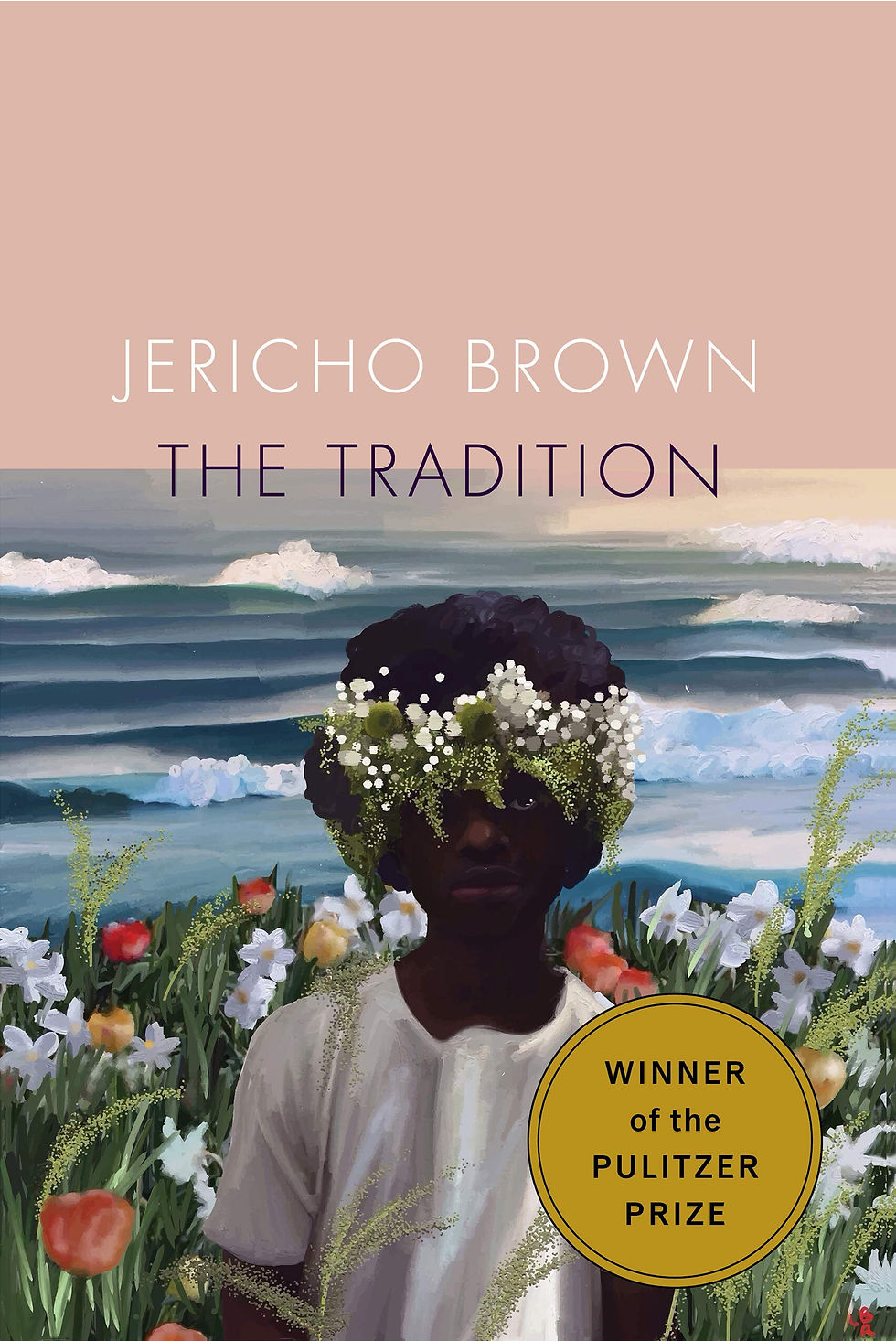
The Tradition is a collection of poems that illustrates fright as something that has grown so familiar to humans that it feels, at times, dull, and it asks what this tradition reveals about who we are and how we survive. Meanwhile, these poems are anything but dull: filled with dazzling figurative language, experimental form (including a new poetic form he invented, the duplex) and flummoxing line breaks, Jericho Brown speeds up our pulses and slows down our eyes, begging us to read, then reread, each word and comma with precise attention until we arrive at the sensation he is attempting to spark in us. In some stanzas, this trauma manifests itself on the page as suicidal ideations, rape, and sexually-transmitted infections; in others it is police violence, parental abuse, and mourning. After each experience, the narrator is somehow able to dilute his thoughts in order to keep breathing and continue on to the next poem, a pattern that readers are left to label as either brave (that is, ignoring pain) or weak (that is, not confronting it). Although the range of different frights in this collection is broad, it is also amazingly specific: in the most confined space that an author can enter, a poem, Brown uses a few wounds, some internal and some external, to show us how an organism evolves in an environment or nation that wishes it dead. As readers, we watch the narrator inflate with more and more helium, waiting for him to burst, but somehow, he keeps himself in one piece. What enchants me most about this book is its hesitance around visualizing trauma: rather than scaring readers so that it easier to relate to him, the narrator demagnifies violent moments into minor forgettable details, like the burgundy car his first love drove, the insects hiding in his house, the exact time and location of a rape, a specific flower species, and so on. In fact, the neurotic refusal to use goriness is perhaps the most astounding statement about trauma that Jericho Brown could ever make; that admitting fear is so stigmatized in our societies that we instead choose to bottle it up, remaining mute. In doing so, the book personifies the symptoms of trauma, expanding the distance between the reader and the author in a similar manner to that in which trauma fissures our families, communities, societies. These poems do not examine our emotions with science, because science would give objective and well-researched answers. Instead, he offers us vibrant poems filled with uncertainties and oscillations, poems that seem, at times, even more accurate than looking at live neurons through a microscope. In this collection, the brain is just resilient enough to heal from the trauma that it is destined to withstand, but too fragile to forget about it or avoid it in the future. Not all of this collection is fright, though. In the white space between the stanzas is a sheer appreciation for life, one that, according to the narrator, makes all the dangers worth it. A collection of nightmares as much as poems, The Tradition left me enervated, gasping for breath, and eager to read it all over again.
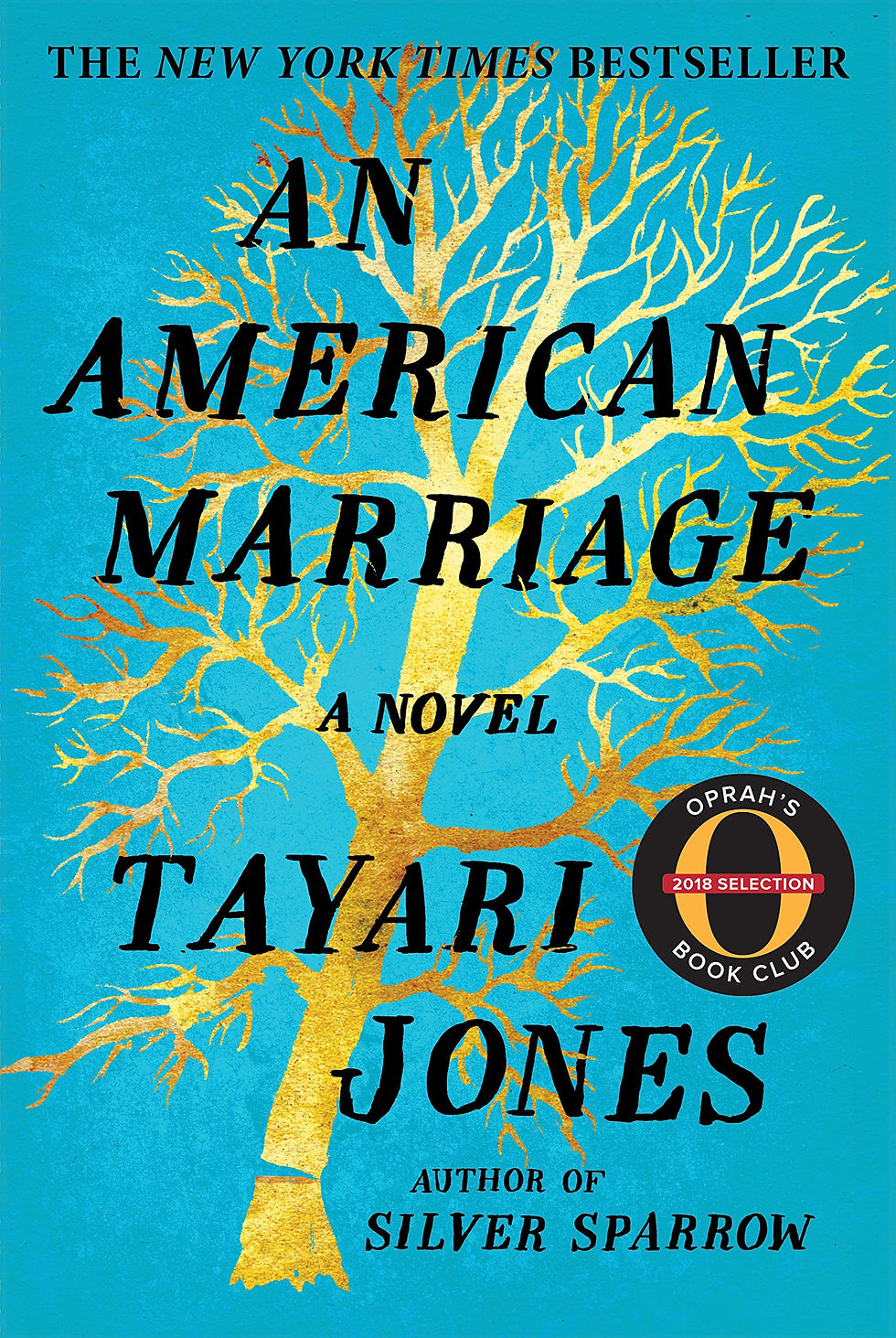
An American Marriage is a novel that pulverizes everything we assumed we knew about grown-up relationships. A vacationing Black couple, Roy and Celestial, is asleep in a hotel one evening when police officers barge into their room and arrest the husband on false accusations that he raped another guest. Similar to the non-fictional America that this novel imitates, he is sentenced to twelve years in prison despite no evidence to suggest his guilt for the charges, and must press pause on a bright-futured life with no sense of what might happen before it resumes. At first, the two keep in frequent contact with each other and are optimistic about their long-distance marriage. Although readers are rooting for them to stick together, we also realize deep inside our stomachs that we are being idealistic. Inside the prison, Roy is in a state of confusion, certain that incarceration will worsen his life, uncertain if it will worsen him. Meanwhile, outside in civilization, life is back to normal for Celestial and she going through some dramatic mood swings: she has an abortion, then gains national attention and commissions for her artwork, loses her mother, then begins dating a high school friend. She visits her husband less and less, fading from his life with little remorse, and then ultimately stops making the drive altogether. A masterful surgeon, Tayari Jones opens up a marriage and rips out everything that once allowed it to flourish: most of all, presence. As readers, we are given an aerial view over the narrative, catching sight of all the veins and organs and skin that the prison sentence shifted our of place. At the conclusion of the novel, Roy is released from prison seven years earlier than he anticipated. It is not perfect, but it is at least a few stitches. As readers alternate back and forth between her wild series of events and his uneventful but delusional life in incarceration, we remain at somewhat of an incapacitated neutral. We want Celestial to give her husband the attention he deserves, but we also like seeing her so radiant and relaxed without him. We want the husband and wife to start speaking again, but we also know awkward silence is better than fighting. A reader of An American Marriage is overwhelmed with contradictions. Luckily, Tayari Jones steers clear of the traditional fiction that likes pressurings its readers to hope for a certain ending or find a certain favorite character. Indeed, she almost even gives us permission to look forward to the final page of the novel, a destination that, for readers, seems like the first break from all the debilitating stress and loneliness that break-ups entail. Unlike most other novels, there is no climax, no resolution, no protagonist, and, with the exception of racist law enforcement agencies, no antagonist. Instead we are spectators along for the ride. And what a ride it is.
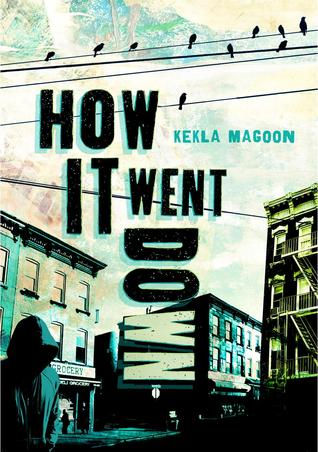
How it Went Down is chaos, but deliberate and beautiful chaos nonetheless. In the first scene, a White man fatally shoots an unarmed Black teenager, Tariq Johnson, outside a local convenience store when he falsely assumes the boy was stealing groceries. It is in broad daylight with several witnesses, but the police release the man with no murder charges after he claims self-defense. In the scenes that follow, we watch friends and relatives mourn his death, dwell on his young adult life, and storm down their streets demanding incarceration for the man who killed him. All of this is shared with readers through the fleeting perspectives of seventeen different characters, from gang members in the area to his disabled sister to neighbors who have never met him. These single-narrator chapters are always blinkered, always unfinished, and gathering information about the shooting through their scenes is like staring down a kaleidoscope. Some claim there was a gun in his fingers, others saw a Snickers bar. With each new character to appear in the novel, the reputation of Tariq is further and further complicated. While some are anxious to paint him as a violent drug dealer and others see him as an angelic son struggling to fit in with his social circles, what readers are given is much more honest: Tyriq was a kindhearted kid who, like the rest of us, made a few mistakes here or there, but was still growing, and wanted to grow from them. I would remark that this novel is especially relevant given the racial awakening of last summer, but the plain-spoken fact is that not a millisecond has passed in America in which stories of aimless violence against Black people, either fictional or non-fictional, have not been deep-seated in our culture and political climate. As dedicated as these characters are to raising awareness about the racism in their surroundings, it has also dawned on them that no matter what is modified on their small residential street, no matter which national news channels broadcast it, Black people will still remain vulnerable inside the crosshairs of White America in the future. As a White sixteen-year-old male (the same age that Tariq is killed) this novel helped me understand racism in an intimate, intense manner that no statistic ever can. To imagine how my life might have been revised, shortened even, if I were born Black is a dizzying experience, and one that I am never going to heal from. Similar to the actual shootings, there is no closure to this novel. We can assume that each of the characters returns to their regular work or school routines, missing Tariq but becoming accustomed to a life without him. Given the complexities of the different perspectives, this is a novel that could have lasted decades, but I think its brevity is a more accurate depiction of racial violence in America; here in the headlines one evening, then gone the next morning, even though the deaths are permanent. In How it Went Down, the reader hears everything; all the gossipping, weeping, and kissing that the characters do in the wake of the shooting. We almost feel like one of them.
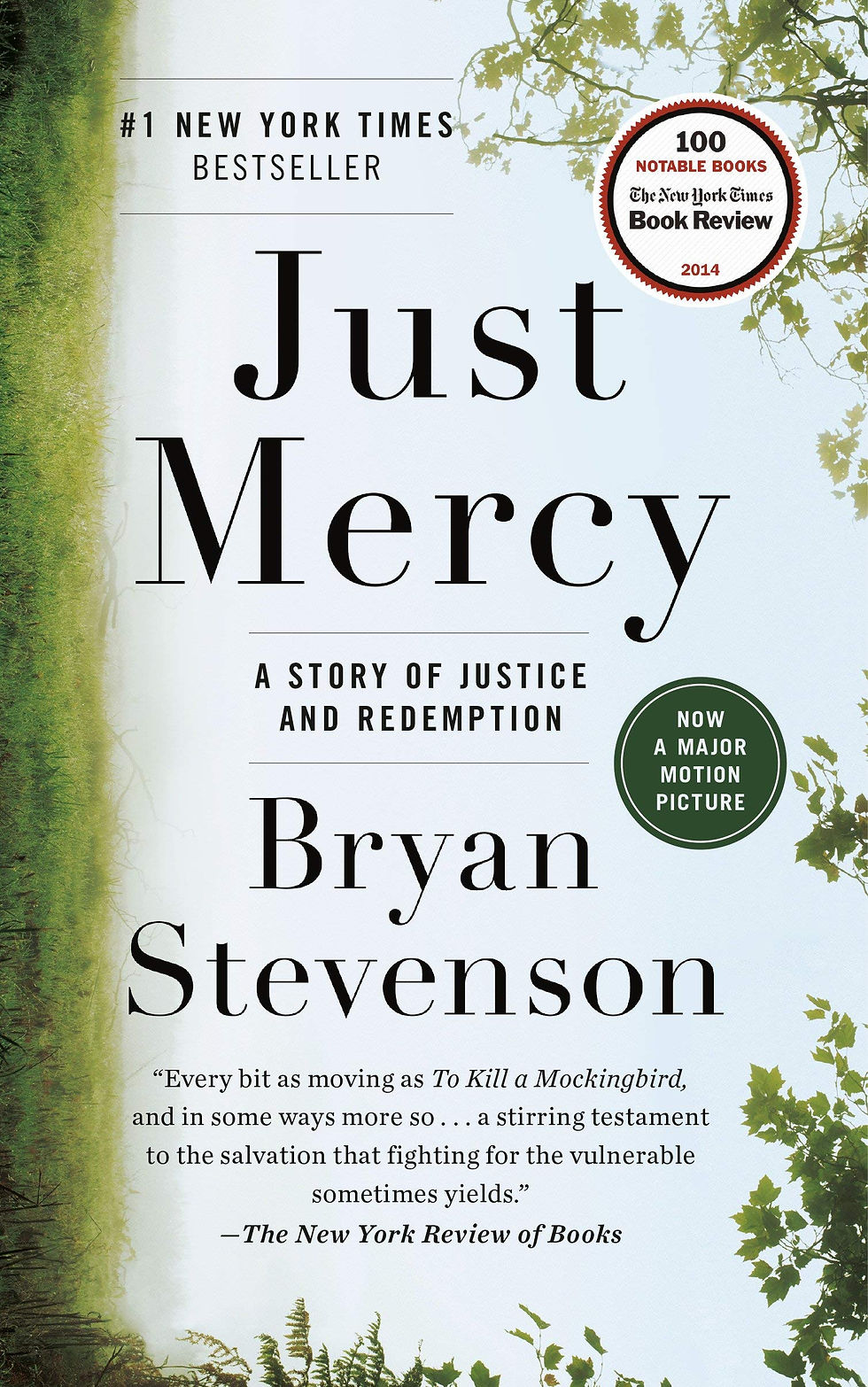
Just Mercy gives me a flicker of hope that incarceration reform in America lies somewhere ahead in the future, perhaps not soon enough for me to witness, but at least somewhere. The author, Bryan Stevenson, is a criminal defense lawyer in the South who started his own non-profit in the eighties, Equal Justice Initiative, to intervene in the vicious and unfair sentencing of marginalized defendants. In memoir-like fashion, he recaps a few specific trials that he argued in his career, stringing together individual stories to make a more bountiful, meaningful conclusion about the lifeblood of criminal justice institutions in America. In this book we are welcomed into a crime scene from the perspective of the accused rather than the accuser, and it is shocking how our attitude towards crime can fluctuate when we distance ourselves from the unempathetic and punishment-starved culture that America prefers. The most emphasized case in the book, and the one that the book-adapted movie Just Mercy reenacts, is that of Water McMillian, an African-American man from Monroeville, Alabama who is convicted for the murder of a local White woman based on fabricated testimonies and the corruption of racist police officers. With assiduous investigating and elbow grease, Stevenson files for a retrial, direct appeal and post conviction appeal, finally winning the case after he convinces the main witness to rescind his dishonest testimonies. A few other attention-worthy cases in the book include that of Ashley Jones, a fourteen-year-old Black girl sentenced to life for murdering her abusive grandfather and aunt; Hebert Richardson, a Black Vietnam War veteran with severe mental illnesses who accidentally kills a girl with a pipe bomb; and Marsha Colbey, a low-income White woman convicted of capital murder for delivering a stillborn baby that she could not resucitate. The hatred with which authorities prosecute these defendants exposes, with no filter, the classism, sexism, and ableism that have also infected our courtrooms. As beautiful and heroic as it might be, however, Just Mercy is no fairytale. Many of the people Stevenson represents in the book are not acquitted. Some are still alive as we speak serving near-infinite sentences, others lost their lives to the electric chair. Like spiderwebs, law enforcement agencies might seem miniature and simple at first, but as we approach closer we start noticing all the intricate tight-woven patterns that prevent insects from escaping. In addition to focusing on the actual humans trapped inside incarceration, Stevenson shows us the methodical laws that American states have ratified to take advantage of low-income citizens. If it were not for people like him who challenge unethical verdicts, defendants would have no other option than being suffocated. At the nucleus of this book is the well-argued concept that our criminal justice institutions are only doing a bad job under the impression that their job is fairness. When we understand that law enforcement agencies are paid to further subjugate citizens and non-citizens of color through mass incarceration and state-sanctioned death penalties, we can also finally understand that criminal justice in America is not broken, it is thriving. I am not going to lie, this book made me feel helpless. I found myself feigning happiness when a single innocent verdict was announced knowing that millions of similar cases that are either too late or too difficult to reverse. I found myself wondering if the exhausting activism against prisons is worth it for the few inmates that it brings home to their families. But this book radiates confidence and persistence, reassuring us that all realities started off as a dream. Intense but vital, Just Mercy proves that small people can fight intimidating institutions, and win.
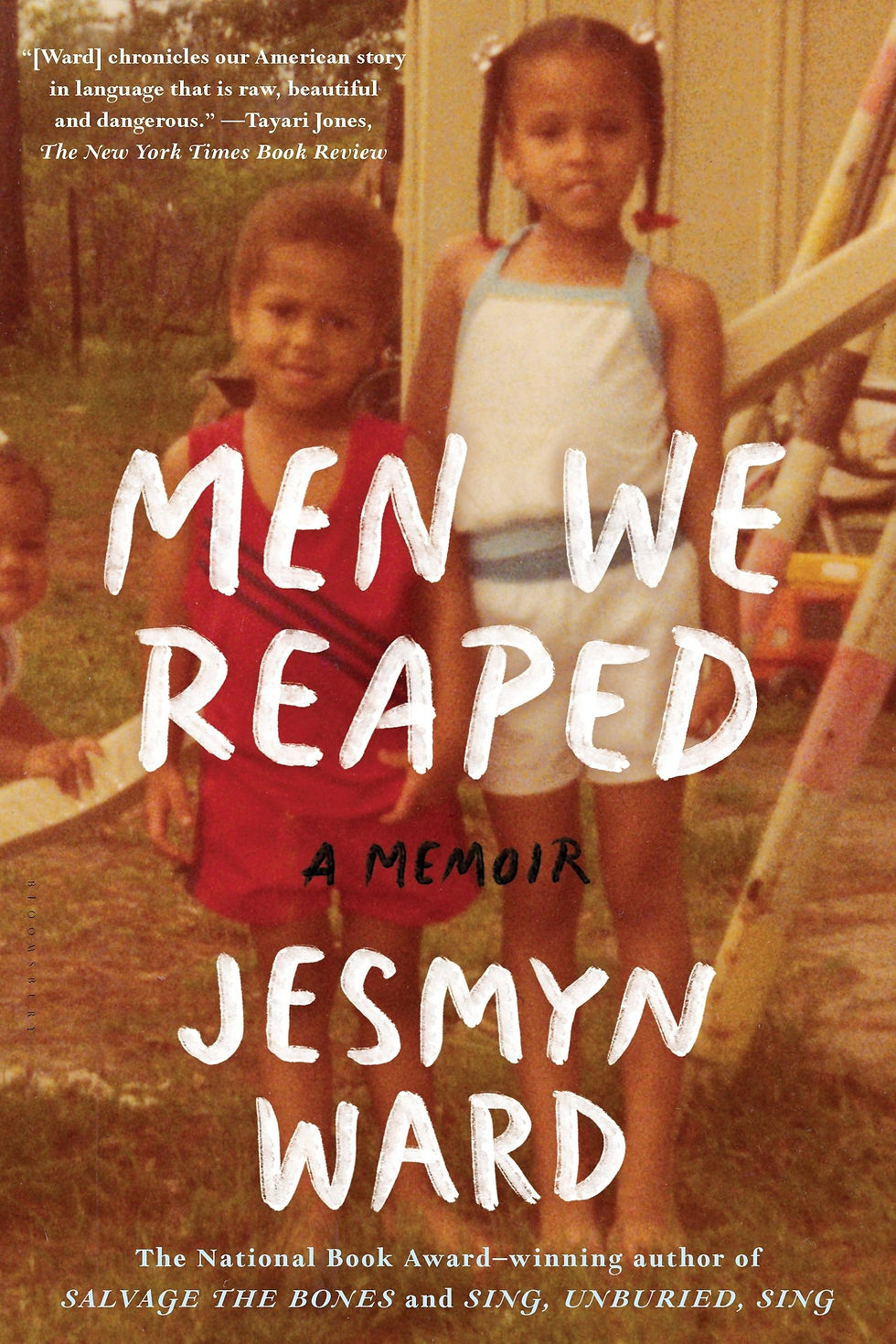
Men We Reaped is an inconsolable memoir about loss; losing people and losing childhood. In it, Jesmyn Ward grapples with the unrelated deaths of five young men she grew up with in DeLisle, Mississippi, all of whom passed when she was in her early twenties. She eulogizes these five men in five different chapters, starting with the most recent, a neighborhood friend who died during a drug-inflicted heart attack, and finishing with the longest-ago and most excruciating, her brother, who was killed in a car accident. In addition to making a statement about what grief does to the human brain, the backwards chronological order prevents us from feeling anesthetized to the deaths; that is, each new death in the memoir is easier for readers to handle because of the ones accumulating before it, but for the narrator, whose life is moving the opposite direction (forwards) through time, the pain amplifies, rather than recedes. In these chapters, she rewinds through her earliest memories with the friends, their last time hanging out together before their deaths, and her reaction to hearing the horrific news on a phone call. Even though we are aware that all five men will cease to exist in a matter of pages, these tender reminiscences of their lives do not mention their impending drug overdoses, suicides, or shootings until the final sentences, which explains the alchemical-like instantness of death as what it is: inexplicable. One at a time, the men she loves and admires disappear from her life, like firecrackers popping in rapid succession: vibrant, dramatic, finite. I could not stop weeping while I was reading this book, and I have never been much of a crier. The five chapters recording the lives of these five men rotate on and off with a more light-hearted memoir in which Ward recalls her childhood growing up as the daughter of divorced and erratic parents in an impoverished area plagued with gang violence and drug addiction. These sections expand smaller memories, like being attacked by one of the pit bulls her father trains for fighting, or being called the n-word at her elite private school, into significant voltas of her life. All the while, we cannot refrain from feeling like we are watching the narrator herself through crosshairs; that her days, too, are numbered. Men We Reaped epitomizes the fundamental, even if less visible, symptoms of institutional racism. It shows us that inhumane living conditions, minimal access to education, minimum-wage work, and low self-esteem can become as lethal to a Black man as the police shootings that steal our attention in the media. Unlike fictional books and movies, Men We Reaped does not attempt to extract a life lesson from these deaths or find a happily-ever-after. In order to fight through this paralyzing grieving, there is weed and alcohol, more weed and alcohol, and then more weed and alcohol. The author never develops an addition to these substances, but her chronic use of them as a coping mechanism goes to show how automatically drug usage can flow through generations of sad families like hers. The end of the memoir, when the retrograding eulogies and forward-moving childhood stories collide, feels strangely unfinished. A narrative about loss, I presume, would not be real if it did.

The Warmth of Other Suns zigzags between non-fiction, speculative fiction, and historical fiction, oftentimes in the span of a single paragraph. It follows three different African-Americans, born decades and states apart, all of whom made the common decision to leave behind their families in the segregated South for the promise of well-paying jobs in the metropolitan North, participating in what we now call the Great Migration. As readers, we alternate back and forth between each of their heart-rending but hopeful narratives like children on a swing. Ida Mae Brandon Gladney, a sharecropper in Mississippi struggling to feed her children, moves her family into a dilapidated apartment unit in Chicago but makes regular visits back home. George Swanson Starling, a fruit picker in Florida unionizing to demand better wages, flees to Harlem (where he finds work as a train porter), when hears rumors that his farm owner bosses are going to attack him. Robert Joseph Pershing Foster, a licensed doctor failing to find hire at hospitals in his native state of Louisiana, drives across the desert to Los Angeles on a whim to open his own clinic. Wilkerson gathered these stories through interviews, but repeats them to us with a genuine and honest dialogue that creates an illusion that she herself was there. Along with these three protagonists, readers experience the ecstasy of entering a new civilization and the arid disappointment of discovering that Northern cities are not less racist than the South, just more disposed to hide their hatred. All suns, no matter their location, can sting. This book suggests that freedom is something that our circumstances do to us, rather than vise versa; that is, freedom is not sitting on an integrated bus, it is the belief that we ourselves can pursue happiness, that we have influence over our fate. In this sense, it is the pure act of searching for a paradise, whether or not the destination is as anti-racist as advertised, that these characters take pride and belonging in. Mixed in with the astounding recited scenes of their migration are non-fictional accounts of race relations at the time of their arrivals in the North, examining phenomena like redlining, mass incarceration, WWI drafting and school integration at a much broader scale than the individual characters can relate to them. These chapters remind us that although the book treats Ida Mae, George and Robert like the center of the universe, their migrations were three among millions of others from similar places with similar aspirations. The Warmth of Other Suns is the most talented piece of writing that I have ever laid eyes on, and I am not exaggerating. Its craft is as eclectic as the stories themselves. More than just an artistic gem, though, it emphasizes that there are fragile humans, with fragile stories, behind the massive statistics that we use to make simplifications about our surroundings. There is no adjective to describe this book, at least not one that humans have invented. It warped my view of America, and I never wish to return.
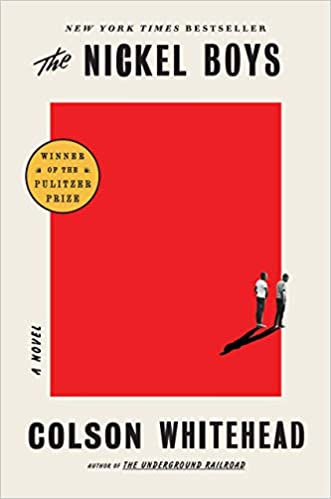
Nickel Boys is realistic fiction, but it would appear dystopian to someone unfamiliar with how ferocious racism in America once was and still is. Elwood Curtis is a starry-eyed but hard working Black kid, both in the classroom and the cigar store in Tallahassee, Florida where he stacks shelves and cleans. He is hitchhiking one morning to his gifted school when the police pull over the car, a stolen vehicle, and arrest both him and the driver. As an alternative to a prison sentence, he must attend and graduate from the Nickel Academy, a plantation disguised as a boarding school that enslaves its students, beats them until unconscious or worse, and segregates them despite the Brown vs. Board of Education ruling earlier in the fifties prohibiting it. During his schooling there, Elwood fantasizes about escaping, but the goody-two-shoes inside him resists the temptation, and besides, administrators have killed past students for doing much less. Elwood is contemplating how to contact the outside world in the middle of the novel when, with no preface at all, we skip forward five decades. Elwood is now a grown-up in New York meeting up at a bar with a fellow Nickel graduate. And then, as fast as we leaped into the future, we are teleported to the school again: Elwood, a teenager again, flees campus along with a friend when rumors circulate that a school official is going to execute him. After we watch Elwood flee campus is a thrilling and unanticipated ending that, in the interest of encouraging other people to read it, I will not spoil. Nickel Boysis a plot-centered novel, which I usually tend to dislike, but instead I was entranced. Unlike the average novel, those reading must adjust to the brain of the author, rather than vise versa. Each chapter plays with time, perspective, dialogue, and emotions like buttons on a remote control. Whitehead does not wait extra sentences for us to notice these tricks and details, though. He assumes that we are keeping our gaze fixed on the television, too fixated to even blink. This, above all else, is my favorite thing about the novel; its impulsiveness, its impatience, its firm assurance in the reader. If there is one thing that remains consistent, it is keeping us at the edge of our seats. Nickel Boys is more than a novel. It teaches us that the world we show our children is the world that they will emulate when they are in charge. And, in doing so, it inspires us to create a utopia.

Comments